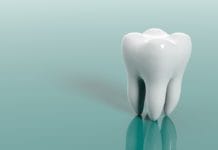A patient’s dental record is both a medical and a legal document. According to the American Dental Association, “The dental record also serves to provide continuity of care for the patient and is critical in the event of a malpractice insurance claim,” and the “information in the dental record should primarily be clinical in nature.”
The following are examples of what is typically included in the dental record1:
- Patient’s personal database, such as name, birth date, address, and contact information, place of employment and telephone numbers (home, work, mobile)
- Medical and dental histories, notes, and updates
- Progress and treatment notes
- Conversations about proposed treatment, the potential benefits and risks, and alternatives associated with that treatment.
As dental professionals, we tend to be very detailed in our approach to patient care. But, are we careful to keep potentially personal or insulting comments out of a patient’s record?
I once worked for a dentist who had a great way of reminding us to keep potentially subjective or opinionated comments out of a patient’s file, in case they or anyone else would happen to see it. He would imitate a police officer writing down a story on an imaginary notepad and say, “Just the Facts Ma’am.” This very caring doctor was even careful we didn’t label patients as a “Gagger” or even a “Smoker,” in case they should see this written on their file. The correct way, he believed to alert the staff for optimal care, was to write, “Sensitive gag reflex,” or, “Patient smokes.” Even if you don’t agree, it should at least make you think about the way you document!
As we know, HIPAA, or the Health Insurance Portability and Accountability Act of 1996, gives patients the legal right to review their dental and medical records. This would also include clinical note entries, which may contain subjective comments or statements made about a patient by a dentist or any of his/her team. Dental records in their entirety are often subpoenaed by lawyers for a plethora of reasons or can be requested by the dental board, perhaps if a patient has filed a complaint. In this case, it is often required an exact, duplicate copy of records sent to the presiding dental board is to be sent to the patient.
If not for this reason alone, dentists and their teams should aim for surgical precision and the height of professionalism in their notes, careful not to include comments that can come across as judgmental. By law, patients can request changes in their medical records if there are mistakes or omissions. An addendum, or comment of correction, can likely be made, but a note cannot be removed once it is part of the record.2
As healthcare professionals, we should follow the lead of other medical professionals when it comes to our record keeping. In the Texas Medical Association article, “What Not To Include in a Medical Record,” it’s stated medical records can be a doctor’s “best defense – or worst enemy – when they are faced with malpractice allegations,” cautioning that the patient’s record is too often used “as a personal diary for interactions with patients and staff.”3 To alleviate doubt on the part of the judge or jury, or in our case, a dental board, the Texas Medical Association urges doctors to keep chart entries limited to information regarding the care rendered and caution against including the following information:
- Financial or health insurance information
- Subjective opinions
- Speculations
- Blame of other or self-doubt
- Legal information such as narratives provided to your professional liability or correspondence with a defense attorney
- Unprofessional or personal comments about the patient
- Derogatory comments about colleagues or their treatment of the patient.
We can record diagnoses, prognoses, notes about treatment recommended or rendered in a factual way, but what about when a patient’s behavior, personality, habits or emotions have somehow affected their treatment or visits to the extent that it must be included in their record to paint the full picture of the event?
Quoting a patient’s words, in quotations and accurately – is perfectly okay. Objectively stating something the patient may have done, such as arrived late, requested something specific, declined a recommendation, moved during an injection – is also okay. If we must paint a further picture of a patients’s personality, it is helpful to use patient-centered, nonjudgmental language.
In her article, “How to use patient-centered language in documentation,” Katharine J. Nelson, MD, recommends using “patient-centered, nonjudgmental language” to “better preserve the physician/patient alliance.”4 Some suggestions Dr. Nelson gives are:
| Not Recommended Language | Recommended Language |
| “Nasty, rude, mean” | “The patient used offensive language.”
“The patient behaved in an aggressive manner by….” |
| “Demanding” | “Made repeated requests.” |
| “Noncompliant” | “Did not adhere to the treatment plan.” |
| “Disturbed, dysfunctional” | “Dysregulated, difficult to manage.” |
| “Needy” | “Sought reassurance.” |
Personality Profiling
Many of us work with dental consultants or have been taught personality profiling to help us motivate patients towards optimal oral health and treatment acceptance.5 What then?
Some of these methods (i.e., DISC profiling, etc.) can provide invaluable insight into how different patients make decisions. They may help the entire team in their approach to communication with this patient. These notes or classifications may be included somewhere within the patient file, whether on paper or noted electronically. Some offices may even choose to put this in the progress notes or conversation notes while others may choose to do it more discretely with a sticker/code/abbreviation somewhere else in the record.
I can’t, and wouldn’t even try, to dictate what is right or wrong or appropriate for your practice when it comes to every detail of the patient record, such as DISC or similar personality profiling. However, one thing Dr. Nelson wrote that touched my heart, and hopefully my brain, the next time I document anything is, “Consider the type of language you would find acceptable in documents describing the care provided to your loved one… Nothing is sacrificed by replacing words that carry a negative connotation with less charged words.”
Before you leave, check out the Today’s RDH self-study CE courses. All courses are peer-reviewed and non-sponsored to focus solely on high-quality education. Click here now.
Listen to the Today’s RDH Dental Hygiene Podcast Below:
References
- What is the Dental Record? American Dental Association. Retrieved from https://success.ada.org/en/regulatory-legal/dental-records
- Your Medical Records. U.S. Department of Health & Human Services: Office for Civil Rights. Retrieved from https://www.hhs.gov/hipaa/for-individuals/medical-records/index.html
- What Not to Include in a Medical Record. Texas Medical Association. Retrieved from https://www.texmed.org/Template.aspx?id=1741&terms=personal%20record
- Nelson, J.K. How to use patient-centered language in documentation. Current Psychiatry. 2011 October;10(10):70-70. Retrieved from https://www.mdedge.com/psychiatry/article/64504/practice-management/how-use-patient-centered-language-documentation
- Practice Aids: The DiSC Personality Report. The Dawson Academy. Retrieved from https://thedawsonacademy.com/product-category/practice-aids/












